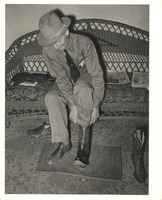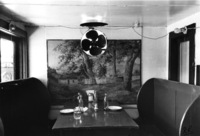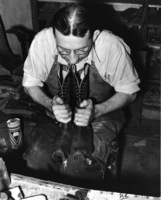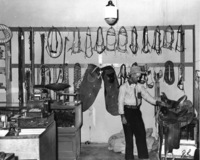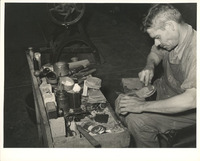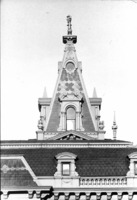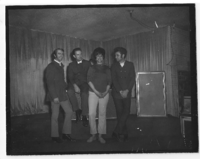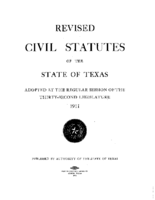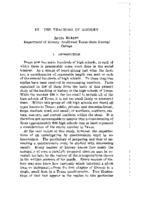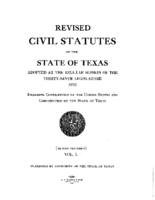Search Results
Displaying results 1 - 20 of 30
Jody Payne, Devall Hick, Kenny Smith, and an unidentified woman
Description
Jody Payne (left) posing with Devall Hick (2nd from left), Kenny Smith (right), and an unknown woman (2nd from right) on the stage of an unidentified venue
26th Legislature SB260
Description
This law established the normal school in San Marcos, now Texas State University.
Fred Cocke legislative bill drafts on establishing Southwest Texas Normal School
Description
Materials include one complete and one incomplete draft of House Bill 696 of the 26th Regular Session of the Texas Legislature (1899). The summary of the proposed bill reads: "An act to provide for establishing, governing, and maintaining a State normal school at San Marcos as to be known as the 'Southwest Texas Normal School.'" A subsequent version of this text became SB260, the legislation that officially authorized the creation of the institution now known as Texas State University.
1899-1901 General Laws of The State of Texas, Establishing the Normal School (excerpt)
Description
Select excerpts: 26th Legislature, 1899, text of S.B. No. 260, page 175: An Act to provide for ... normal school to be located at San Marcos; 27th Legislature, 1901, text of S.B. No. 142, pages 33-35: An Act to provide for the organization, control, management and active operation of the Southwest Texas State Normal School.
1911 Civil Statutes of Texas (excerpt)
Description
Excerpt. Pages 570-575 regard state teachers colleges.
The Teaching of History
Description
Paper presented in the Conference Upon Problems of Educational Administration in Texas, Austin, TX.
1925 Civil Statutes of Texas (excerpt)
Description
Excerpt. Pages 701-705 regard state teachers colleges.
Laws Establishing and Maintaining Texas State Teachers Colleges
Description
A group of laws compiled by C.E. Evans regarding the establishment and maintenance of the teachers colleges in the State of Texas.
J.M. (John Matthew) Cape oral history interview
Description
John Matthew (J.M.) Cape II (1924-2013), grandson of early San Marcos settler John Matthew Cape, was born in his family home on the banks of the San Marcos River. He joined the family cotton business, working for 43 years as a cottonseed broker. Cape discusses growing up in San Marcos, his family’s business, the history of cotton in Texas including farms, mills, and gins, the current state of cotton oil production, and some of the changes he’s witnessed in the city and the surrounding areas.
Ralph Houston oral history interview
Description
Dr. Houston talks about growing up in Denton County, attending college at UNT and teaching in Big Spring, Texas. He discusses studying for his PhD at UT-Austin and being recruited by Deacon Wright to teach at SWTSTC in the 1930s. He describes campus, the English department and its staff, and his experiences as a professor, head of the English department, and Dean of Liberal and Fine Arts during his time at the university (1937-1970). He also relates stories about Dr. McCrocklin and the university's participation in the AAUP and other academic organizations.
